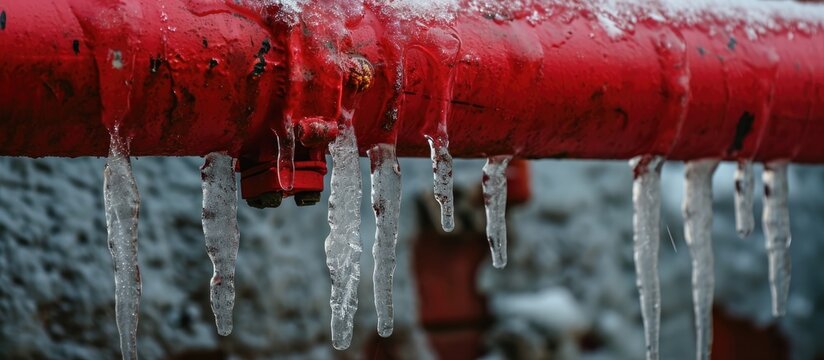Important Advice to Avoid Frozen Plumbing in Winter
Important Advice to Avoid Frozen Plumbing in Winter
Blog Article
Have you been trying to locate know-how on Preventing and dealing with frozen pipes?

Winter can wreak havoc on your plumbing, specifically by freezing pipelines. Here's how to prevent it from happening and what to do if it does.
Introduction
As temperatures decline, the threat of icy pipelines boosts, potentially leading to pricey fixings and water damage. Understanding just how to stop frozen pipelines is vital for house owners in cold environments.
Understanding Icy Pipes
What creates pipes to ice up?
Pipes ice up when exposed to temperatures listed below 32 ° F (0 ° C) for extended durations. As water inside the pipes freezes, it increases, putting pressure on the pipe wall surfaces and possibly causing them to rupture.
Threats and problems
Frozen pipes can bring about water system interruptions, building damages, and costly repair work. Burst pipes can flooding homes and cause comprehensive architectural damage.
Signs of Frozen Pipes
Identifying icy pipelines early can stop them from rupturing.
Just how to identify frozen pipes
Look for lowered water circulation from taps, unusual smells or sounds from pipes, and noticeable frost on revealed pipes.
Prevention Tips
Shielding susceptible pipes
Cover pipes in insulation sleeves or make use of warm tape to protect them from freezing temperature levels. Focus on pipelines in unheated or exterior locations of the home.
Home heating methods
Maintain interior areas sufficiently warmed, particularly locations with pipes. Open cupboard doors to permit cozy air to circulate around pipes under sinks.
Protecting Outside Plumbing
Yard tubes and outdoor faucets
Disconnect and drain garden pipes prior to winter. Install frost-proof spigots or cover exterior faucets with insulated caps.
What to Do If Your Pipelines Freeze
Immediate actions to take
If you suspect frozen pipelines, keep taps open to soothe pressure as the ice melts. Utilize a hairdryer or towels taken in hot water to thaw pipes slowly.
Long-Term Solutions
Structural adjustments
Take into consideration rerouting pipelines far from outside walls or unheated areas. Add additional insulation to attic rooms, basements, and crawl spaces.
Updating insulation
Purchase top notch insulation for pipes, attic rooms, and walls. Appropriate insulation helps preserve consistent temperatures and reduces the danger of icy pipes.
Final thought
Preventing frozen pipelines calls for proactive procedures and fast responses. By comprehending the reasons, indicators, and preventive measures, property owners can secure their pipes throughout winter.
5 Ways to Prevent Frozen Pipes
Drain Outdoor Faucets and Disconnect Hoses
First, close the shut-off valve that controls the flow of water in the pipe to your outdoor faucet. Then, head outside to disconnect and drain your hose and open the outdoor faucet to allow the water to completely drain out of the line. Turn off the faucet when done. Finally, head back to the shut-off valve and drain the remaining water inside the pipe into a bucket or container. Additionally, if you have a home irrigation system, you should consider hiring an expert to clear the system of water each year.
Insulate Pipes
One of the best and most cost-effective methods for preventing frozen water pipes is to wrap your pipes with insulation. This is especially important for areas in your home that aren’t exposed to heat, such as an attic. We suggest using foam sleeves, which can typically be found at your local hardware store.
Keep Heat Running at 65
Your pipes are located inside your walls, and the temperature there is much colder than the rest of the house. To prevent your pipes from freezing, The Insurance Information Institute suggests that you keep your home heated to at least 65 degrees, even when traveling. You may want to invest in smart devices that can keep an eye on the temperature in your home while you’re away.
Leave Water Dripping
Moving water — even a small trickle — can prevent ice from forming inside your pipes. When freezing temps are imminent, start a drip of water from all faucets that serve exposed pipes. Leaving a few faucets running will also help relieve pressure inside the pipes and help prevent a rupture if the water inside freezes.
Open Cupboard Doors
Warm your kitchen and bathroom pipes by opening cupboards and vanities. You should also leave your interior doors ajar to help warm air circulate evenly throughout your home.
:strip_icc()/snow-outdoor-faucet-pipes-4af65d1e5e904fb1aa7bf74071fe5d89.jpg)
I was brought to that editorial on How to prepare your home plumbing for winter weather through someone on our other site. If you appreciated our blog post kindly consider to pass it around. I praise you for your time. Kindly come by our blog back soon.
Click Here To Read More Report this page